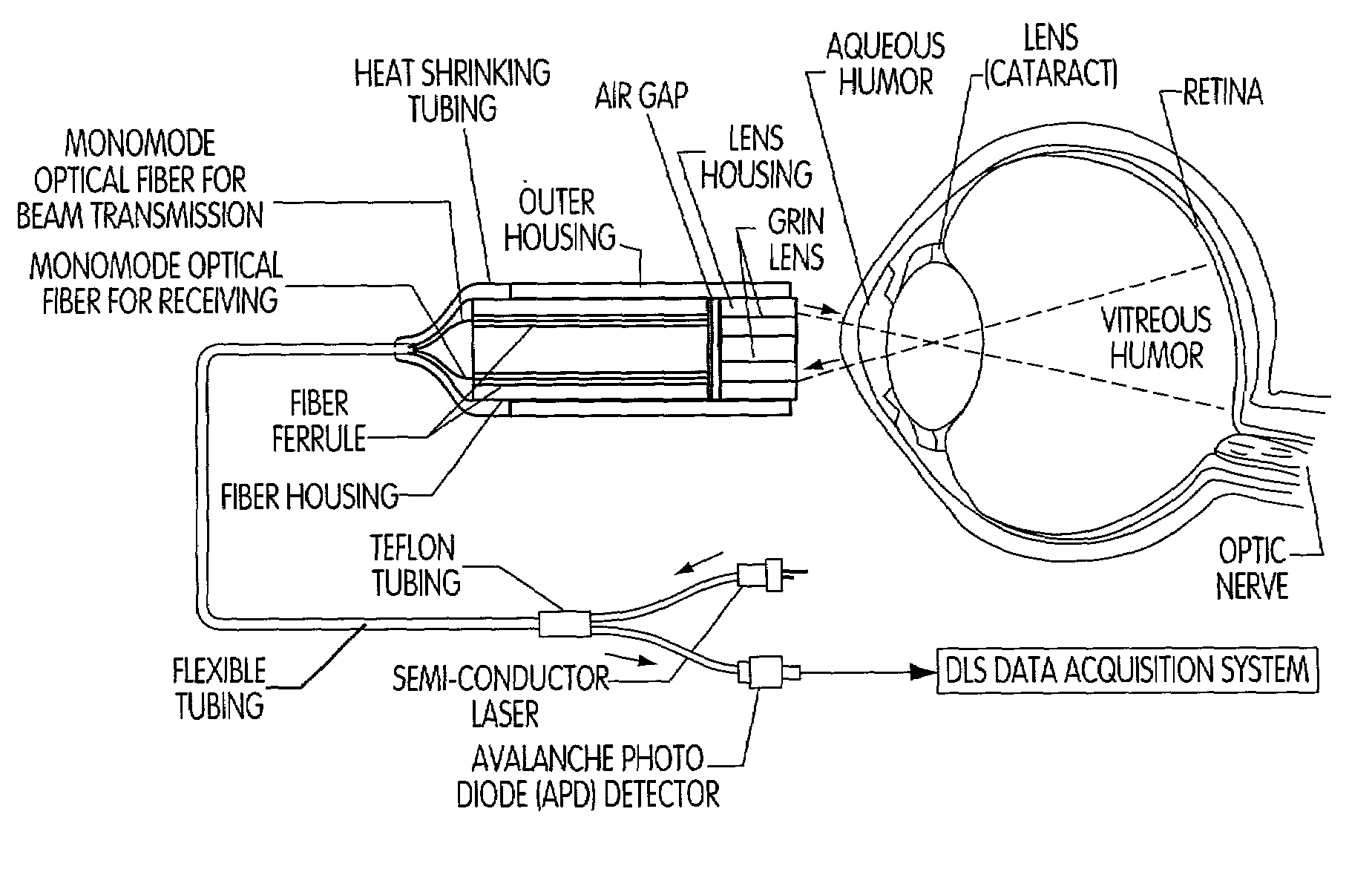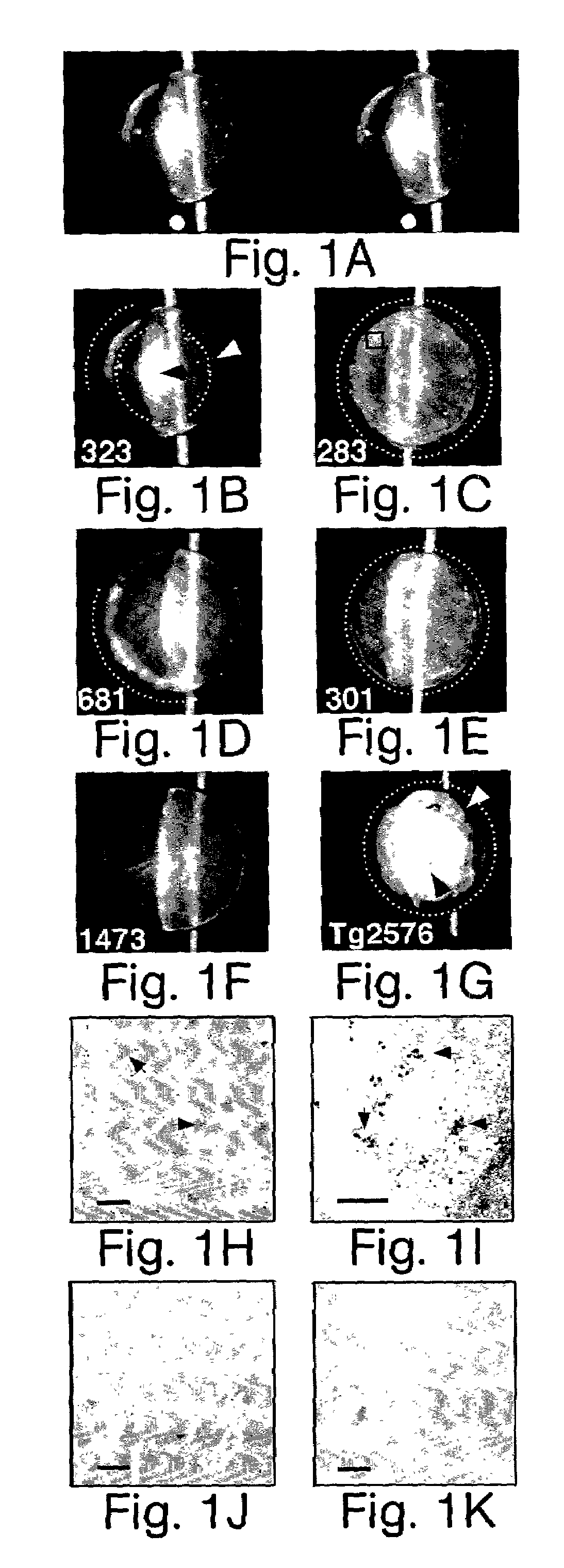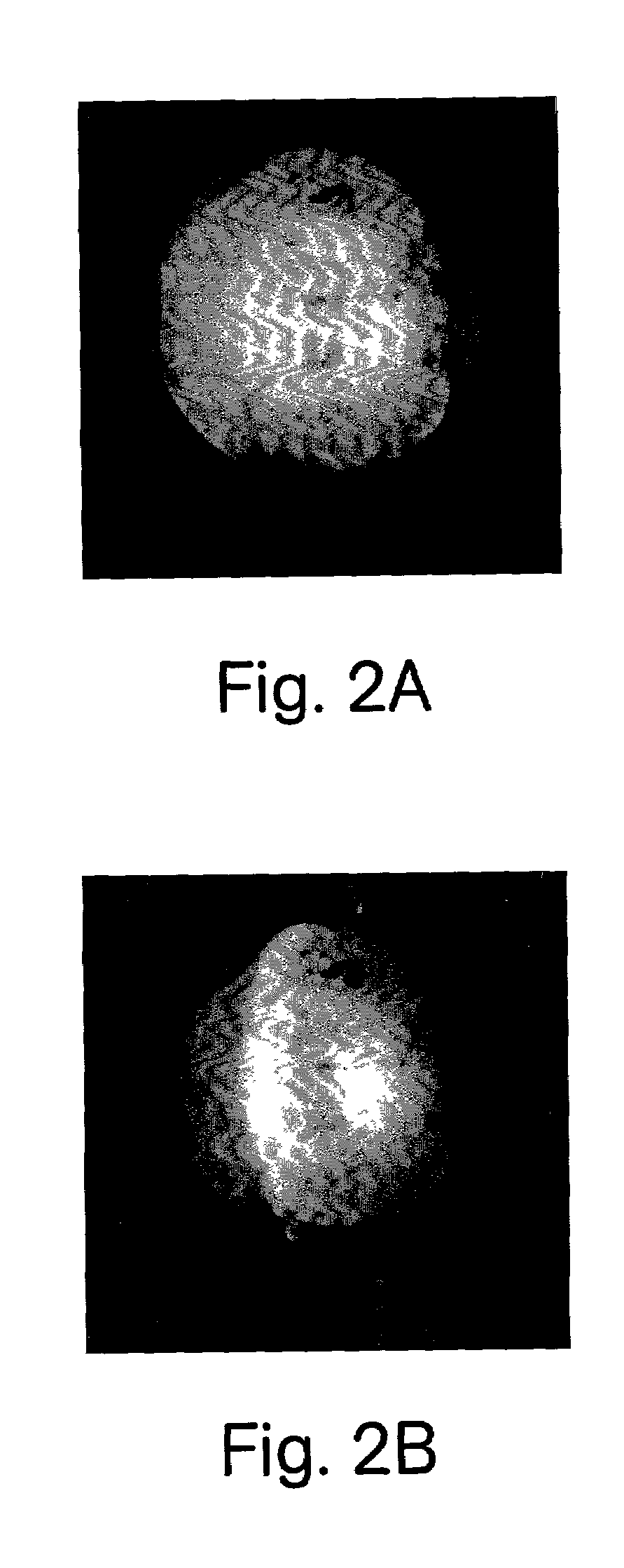Methods for diagnosing a neurodegenerative condition
a neurodegenerative condition and diagnostic method technology, applied in the field of neurodegenerative conditions diagnosis, can solve the problems of poor reproducibility, specificity, sensitivity, poor reproducibility of antemortem diagnosis, and presently incurable diseases, and achieve the effects of reliable and non-invasive diagnosis, early detection of neurodegeneration, and specific diagnostic methods
- Summary
- Abstract
- Description
- Claims
- Application Information
AI Technical Summary
Benefits of technology
Problems solved by technology
Method used
Image
Examples
example 1
Alzheimer's Disease β-Amyloid Promotes Lens Protein Aggregation and Supranuclear Cataract Formation
[0041]Alzheimer's disease is characterized by cerebral accumulation of extracellular protein aggregates composed predominantly of β-amyloid Aβ peptides. The data described herein indicate that aggregates containing Aβ also form deep cortical / supranuclear cataracts within the lenses of Alzheimer's disease patients. This cataract phenotype is distinct from common age-related cataracts in the lens nucleus.
[0042]Supranuclear / Cortical versus Age-Related Nuclear Cataracts
[0043]The cornea and the crystalline lens of the eye form an optical system that focuses an image on the retina. The lens is comprised of a capsule that covers the entire lens, an anterior epithelial monolayer, concentric layers of lens “fiber” cells that form a superficial cortical region, and a deep nuclear region. The region at the interface of cortex and nucleus is called the supranucleus. In most individuals, the lens b...
example 2
Preparation of Lenticular Protein
[0096]Human and bovine lenses were dissected under a laminar flow hood using standard methods. A scalpel was used to make incisions at the junction between the cornea and the sclera large enough to insert the tip of a small pair of scissors. Warm phosphate buffered saline (PBS) was then injected between the cornea and the lens. The scissors were used to cut around the cornea which could then be removed and kept for further experiments. After cutting around the iris, the lens was exposed and resting on the vitreous. Four diametrically opposed anteroposterior incisions in the sclera were made so as to put the sclera flat on the table as four quadrants linked near the fovea. The lens was the lifted from the vitreous, and the ligaments that attach the lens loosely to the vitreous as well as the zonular muscles were cut. Careful dissection kept the capsule and epithelial layer intact. Finally, the lens is rolled onto its equator and the remainders of the ...
example 3
Use of DLS Instrumentation to Diagnose AD
[0101]The light scattered by protein aggregates varis with the size of an aggregate. The hydrodynamic radius (size) of a protein is inferred from its light scattering properties. In the cortical region of the lens, protein aggregation as an age-dependent process is minimal. In the nucleus, however, protein aggregation occurs as a normal age-dependant process. In the diagnostic method described herein, the cortical and supranuclear regions of the lens are evaluated for protein aggregation.
[0102]Population-derived data of the light scattering properties of the cortical and supranuclear regions of the lens of normal (and AD) individuals. These data yield means for aggregate size in the cortex and supranculeus. The light scattering data from a patient suspected to have AD or at risk for AD is compared to these means and the significance of the difference used to assign a probability score as to the likelihood that aging alone accounts for the siz...
PUM
| Property | Measurement | Unit |
|---|---|---|
| wavelength | aaaaa | aaaaa |
| wavelength | aaaaa | aaaaa |
| molecular weight | aaaaa | aaaaa |
Abstract
Description
Claims
Application Information
 Login to View More
Login to View More - R&D
- Intellectual Property
- Life Sciences
- Materials
- Tech Scout
- Unparalleled Data Quality
- Higher Quality Content
- 60% Fewer Hallucinations
Browse by: Latest US Patents, China's latest patents, Technical Efficacy Thesaurus, Application Domain, Technology Topic, Popular Technical Reports.
© 2025 PatSnap. All rights reserved.Legal|Privacy policy|Modern Slavery Act Transparency Statement|Sitemap|About US| Contact US: help@patsnap.com



